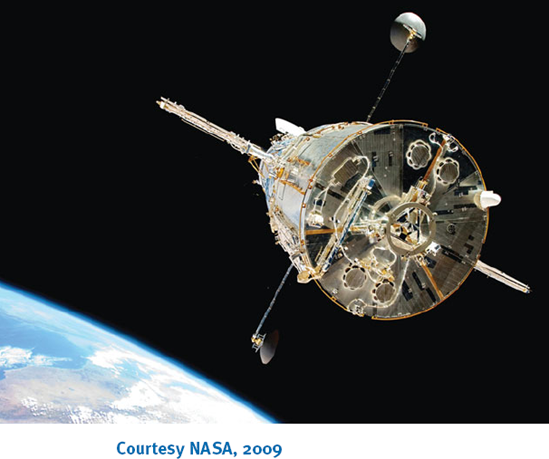Chapter 1. BASIC CONCEPTS

THE LEARNING GOALS FOR THIS CHAPTER ARE:
Review the SI system of units and standard prefixes
Know the definitions of basic electrical quantities: voltage, current, and power
Know the symbols for and definitions of independent and dependent sources
Be able to calculate the power absorbed by a circuit element using the passive sign convention
Hubble Space Telescope If you were asked to identify the top engineering achievements that depend on currents, voltages, and power in electrical systems, would NASA's Hubble Space Telescope make your list? It should. Launched over 20 years ago into an orbit 375 miles above the Earth's surface, the Hubble Telescope avoids distorting effects of the atmosphere and gives significant new data about the universe. It features multiple channels having many intricate electrical systems that detect different wavelengths of light and enables us to examine our solar system as well as remote galaxies. The success of the Hubble Space Telescope program has led to other NASA plans. In February 2010, the Solar Dynamics Observatory was launched to aid in studying our sun's dynamic processes including high resolution measurements of solar flares; it is the first mission of NASA's Living with a Star program.
Sophisticated as it is, the power of the Hubble Space Telescope is rooted in the fundamental concepts you will begin to study in this chapter—charge, ...
Get Engineering Circuit Analysis: International Student Version, Tenth Edition now with the O’Reilly learning platform.
O’Reilly members experience books, live events, courses curated by job role, and more from O’Reilly and nearly 200 top publishers.

